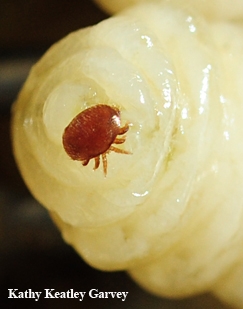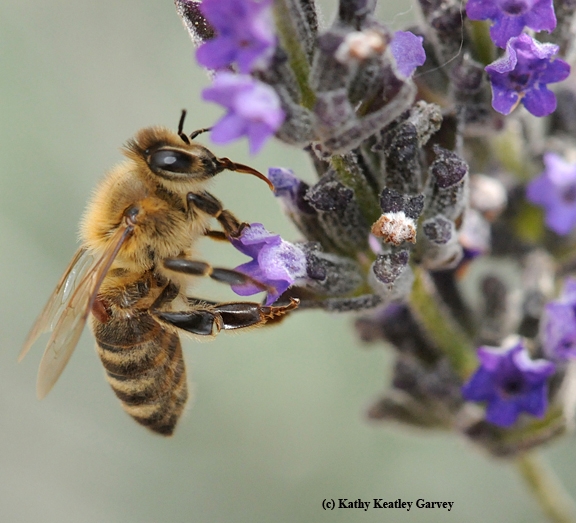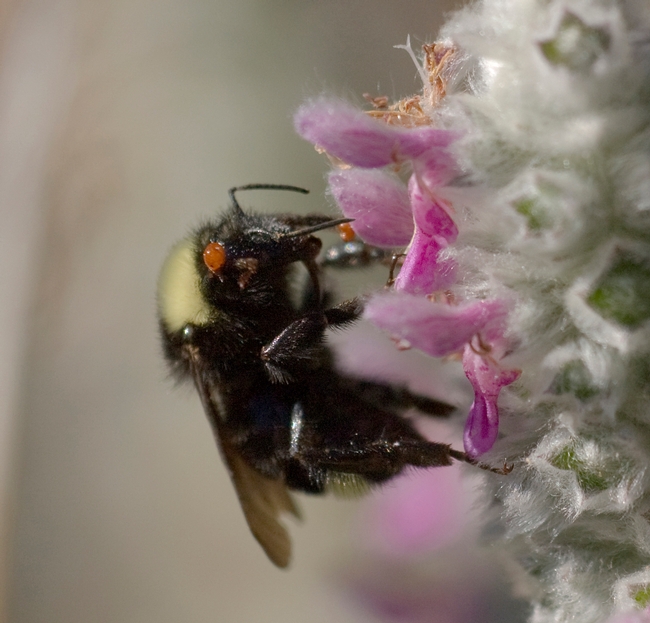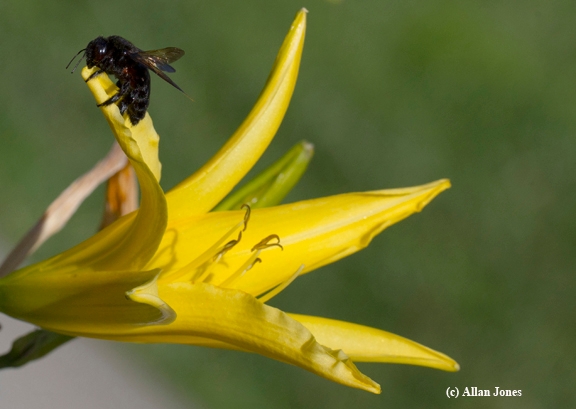
We remember seeing a varroa mite attached to a foraging honey bee one warm summer day in our pollinator garden. The mite was feeding off the bee and the bee was feeding on the nectar of a lavender blossom.
Didn't seem fair.
We've never seen a varroa mite on bumble bees or carpenter bees, but Davis photographer Allan Jones has--and he's photographed them. (See below)
When varroa mites tumble off a honey bee and into a blossom, they can hitch a ride on other insects, such as bumble bees and carpenter bees.
"Varroa have been recorded hitching rides on bumble bees and yellowjackets," observed native pollinator specialist Robbin Thorp, distinguished emeritus professor of entomology at UC Davis. "Varroa have been reported as feeding on larvae of these and other critters--but not successfully reproducing on them. Also bumble bees and yellowjackets typically overwinter as hibernating queens not as perennial colonies like honey bees. Thus they are not suitable hosts for Varroa."
Extension apiculturist emeritus Eric Mussen says that bees other than honey bees aren't reproductive hosts for the varroa mite.
"As far as I know, Varroa destructor may be able to find soft areas of the exoskeleton of insects other than honey bees and feed on them," he says. "I have no idea whether or not the substitute hemolymph would sustain the mites for very long. The mites have practically no digestive capabilities. They simply utilize the previously-synthesized bee blood, to which they seem to be perfectly adapted."
"Since the mites reproduce on honey bee pupae, there are a number of considerations about potential other reproductive hosts," Mussen said, citing:
- Are the nutrients of the substitute host close enough to those of honey bees to support immature mite development?
- Can immature mites that develop properly at honey bee cell environmental conditions (temperature and relative humidity) find a similar environment in the nests of other insects?
- Do other insects tolerate the presence of mites on their bodies or in their brood nests?
Like honey bees, bumble bees do segregate their pupae in single cells, Mussen says, but he was unable to find any studies devoted to whether bumble bee pupal conditions support Varroa destructor reproduction.
Sounds like a good research project!
Attached Images:

A varroa mite attached to a honey bee forager. It's the reddish brown spot near the wing. The bee is foraging on lavender. (Photo by Kathy Keatley Garvey)

Bumble bee, Bombus californicus, with a hitchhiking varroa mite. (Photo by Allan Jones, Davis)

Varroa mite on a carpenter bee. (Photo by Allan Jones, Davis)